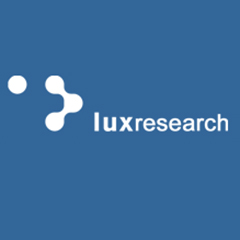Metals will be the biggest segment at $12.8 billion as geographically diverse demand offers rare opportunities for innovation and product differentiation, Lux Research says
BOSTON, MA – June 11, 2013 – The global market for photovoltaic (PV) materials is poised to grow 52% to $27.2 billion, up from $17.8 billion in 2012. As PV supply and demand come back into balance in 2015, margins will steadily improve and create new opportunities for innovative materials developers, according to Lux Research.
Metals, including polysilicon, metallization pastes, and metallic absorber materials in CIGS, will gain the biggest market share, reaching $12.8 billion in 2018. Polysilicon alone will make a $6 billion market, based on global x-Si module demand.
“Differentiated materials that enable high cell or module efficiencies or longer lifetime will be able to earn a premium and cash in on the growing demand,” said Fatima Toor, Lux Research Analyst and the lead author of the report titled, “From Cost Reductions to Performance Enhancements: Mapping the $27 Billion Photovoltaic Materials Market.”
“In addition, the push towards improved quality will lead to materials innovations that not only drive down the $/W but also the $/kWh, enabling sustainable growth of global PV demand,” she added.
Lux Research analysts used detailed cost and demand models to evaluate materials opportunities in the emerging landscape. Among their findings:
- Crystalline silicon tops market share. Materials needed for crystalline silicon modules present the largest opportunity, reaching $23.8 billion in 2018. Materials like backsheets, non-EVA encapsulants, metallization pastes, and antireflection (AR) coatings for module glass provide opportunity for innovation.
- Differentiation is key. As module manufacturers drive to offer improved efficiencies or reliability, they need innovative materials such as Innovalight’s silicon inks for selective emitter cell design. Other innovators include 1366 Technologies, Natcore, Bandgap Engineering, Polyrise, Cencorp, and Sinovia Technologies.
- Move toward quality. The solar industry now prioritizes low $/kWh on top of $/W, offering modules with a longer lifetime. Material suppliers like DuPont and downstream developers are setting the new standard. Simultaneously, companies such as Solar Buyer are helping financial institutions rate module quality.
The report, titled “From Cost Reductions to Performance Enhancements: Mapping the $27 Billion Photovoltaic Materials Market,” is part of the Lux Research Solar Components Intelligence service.
About Lux Research
Lux Research provides strategic advice and ongoing intelligence for emerging technologies. Leaders in business, finance and government rely on us to help them make informed strategic decisions. Through our unique research approach focused on primary research and our extensive global network, we deliver insight, connections and competitive advantage to our clients. Visit www.luxresearchinc.com for more information.



























